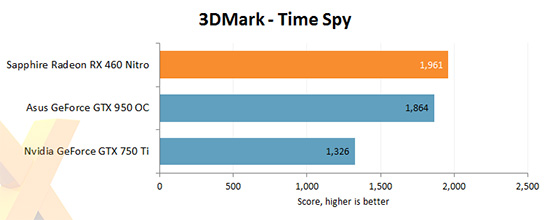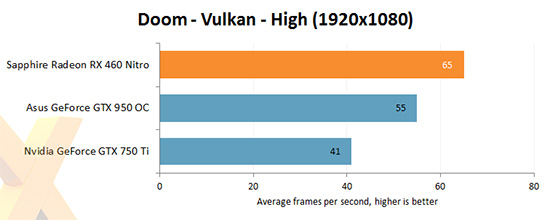Our Aim
To provide you with an overview on New And existing technologies, hopefully helping you understand the changes in the technology. Together with the overviews we hope to bring topical issues to light from a series of independent reviewers saving you the time And hassle of fact finding over the web.
We will over time provide you with quality content which you can browse and subscribe to at your leisure.
TekSpek 's

AMD Radeon RX 460
Date issued:
AMD Radeon RX 460
2016 is proving to be a bumper year for new graphics card launches. Both AMD and NVIDIA have refreshed their portfolios with a range of cards based on cutting-edge architectures, and there's plenty of differentiation between the two, as while NVIDIA has focussed primarily on the high-end, AMD has plied the mainstream end of the market with the Radeon RX 480, Radeon RX 470 and, as of today, the Radeon RX 460.

Introduced as the baby of the bunch, the RX 460 is a mainstream part designed to serve as a cost-effective upgrade to a CPU's integrated graphics. If you want to dabble in a bit of PC gaming at a ubiquitous 1080p resolution or you're intrigued by the fascination of MOBA titles, the Radeon RX 460 should fit the bill.
Prices are set to start at $99 and $129, for 2GB or 4GB variants, respectively, and for the modest fee RX 460 will offer a lot of what's good about AMD's newest 14nm architecture. Supporting the latest graphics APIs and designed with efficiency in mind, the relatively small 123mm² die will offer more than two teraflops of performance while requiring no additional power connection.
AMD Radeon line-up |
|||||
|---|---|---|---|---|---|
| Radeon RX 480 | Radeon RX 470 | Radeon RX 460 | |||
| Launch Date | June 2016 | August 2016 | August 2016 | ||
| Codename | Polaris 10 XT | Polaris 10 Pro | Polaris 11 | ||
| Architecture | GCN 4th | GCN 4th | GCN 4th | ||
| Process (nm) | 14 | 14 | 14 | ||
| Transistors (mn) | 5,700 | 5,700 | 3,000 | ||
| Approx Die Size (mm²) | 232 | 232 | 123 | ||
| Processors / CU | 2,304 / 36 | 2,048 / 32 | 896 / 14 | ||
| Texture Units | 144 | 128 | 56 | ||
| ROP Units | 32 | 32 | 16 | ||
| Peak GPU Clock (MHz) | 1,266 | 1,206 | 1,200 | ||
| Peak GFLOPS (SP) | 5,834 | 4,940 | 2,150 | ||
| Memory Type | GDDR5 | GDDR5 | GDDR5 | ||
| Memory Size (MB) | 4,096 / 8,192 | 4,096 | 2,048 / 4,096 | ||
| Memory Bus (Bits) | 256 | 256 | 128 | ||
| Memory Clock (MHz) | 7,000 / 8,000 | 6,600 | 7,000 | ||
| Memory Bandwidth (GB/s) | 224 / 256 | 211 | 112 | ||
| Power Connectors | 6-pin | 6-pin | - | ||
| TDP (Watts) | 150 | 120 | <75 | ||
| GFLOPS per Watt | 38.89 | 41.17 | 28.67 | ||
| Launch MSRP | $199+ | $179+ | $99 / $129 | ||
Perusing the specification table is illuminating and we can see that AMD has wielded the axe in order to meet the aggressive price point. The number of Compute Units (CUs) has been cut by over half compared to the RX 470, resulting in 896 processors and 56 texture units. Continuing the trim, the number of ROPs has been chopped in half, from 32 to 16, and so too has the memory bus, from 256 to 128.
A snip here and a snip there is what enables the ultra-low-power design, and RX 460 is going to be particularly well suited to mini-ITX PCs where space is at a premium.

What kind of performance level can you expect? Benchmarks from leading review sites show that partner Radeon RX 460 cards are likely to be fractionally quicker than a NVIDIA GeForce GTX 950 in modern titles built using the latest APIs.

Crucially, there's enough power to deliver the desired 60 frames per second in modern titles with medium-to-high image-quality settings. While performance is obviously nowhere near the levels of the RX 470 or RX 480, AMD's third-rung GPU remains an attractive option for anyone looking to upgrade from an IGP.
Summary
AMD is building on the popularity of its Radeon RX 400-series GPU line-up with the introduction of a third-tier offering priced from just $99. Dubbed the Radeon RX 460 and championing a lot of what's good about the firm's 14nm Polaris architecture, the latest addition can be deemed a solid upgrade from integrated graphics and an attractive choice for low-cost gaming PCs.
A wide range of AMD Radeon RX 460 graphics cards are available to purchase at Scan Computers.